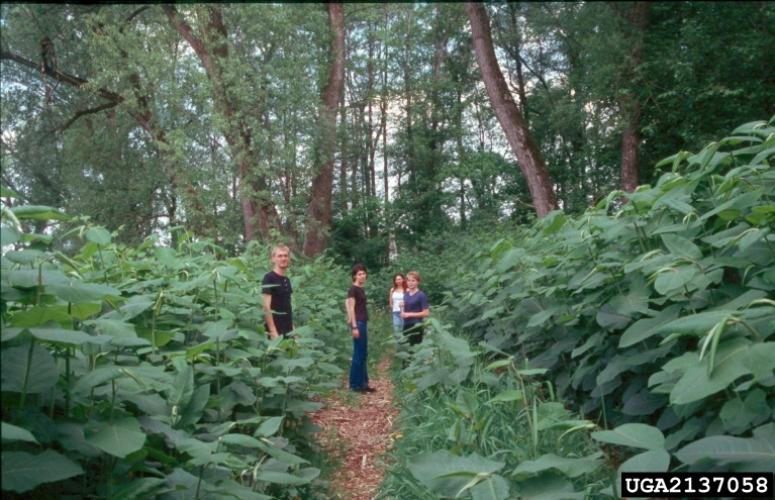Knotweed, Giant
Identification
Appearance
Giant knotweed is an herbaceous perennial that is woody in appearance and can grow over 10 feet tall. Root extend deeply into the soil creating a dense impenetrable mat.
Foliage
Alternate, simple, dark green. Leaves are 6-14 inches long and have a heart-shaped base coming narrow to a point.
Flowers
Numerous small, greenish-white flowers appear in the leaf axils of the upper stems. Giant knotweed blooms have both male and female parts in the same flower.
Fruits
Fruits are papery and broadly winged. Each fruit contains a 3-sided achene that is small, shiny and brown. Small amounts of seed are viable and have no dormancy requirement.
Biology
Ecological Threat
Knotweeds are capable of quickly forming dense stands where they can crowd out native vegetation. Thickets can clog small waterways and displace streamside vegetation, increasing bank erosion and lowering the quality of riparian habitat for fish and wildlife. Once established, these stands are very difficult to eradicate.
Origin
Introduced to North America as an ornamental plant in the late 1800s.
Habitat
Meadows, fields, river banks, lake shore.
Life Cycle
Early in the season, new shoots can grow three to four inches per day. Knotweed grows three to 12 feet tall. The plant’s greenish white flowers are functionally unisexual... Blooms are up to 4” long and occur during August-October.
Vermont Distribution
Citations
Photo Credit
Giant Knotweed, 5447672, Leslie J. Mehrhoff, University of Connecticut, CC 3.0
Giant Knotweed flower, 2137039, Barbara Tokarska-Guzik, University of Silesia, CC 3.0
Giant Knotweed, 2137058, Barbara Tokarska-Guzik, University of Silesia, CC 3.0
Giant Knotweed and Japanese knotweed, 2136091, Barbara Tokarska-Guzik, University of Silesia, CC 3.0
Giant Knotweed Leaf, 5447656, Leslie J. Mehrhoff, University of Connecticut, Bugwood.org
Information Credit
Wisconsin Dept of Natural Resources
PA Dept Conservation and Natural Resources, Giant Knotweed




